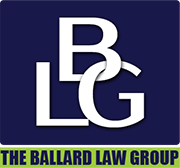When buying a house, you will likely be taking on a mortgage as well. There are many different types of mortgages, but in this post we’re going to focus on the two primary types: fixed-rate mortgages and variable-rate mortgages.
Fixed-Rate Mortgages
As the name would suggest, a fixed-rate mortgage charges a set interest rate throughout the life of the loan. The amount you pay each month will remain the same, but the principal and interest amounts will vary slightly as you payoff the loan.
The benefits of having a fixed-rate mortgage is that you’ll never be caught off guard with what you will owe the next month. This makes it easier for homeowners to budget out their finances. The downside to this type of loan is that when interest rates are high, it can be difficult to qualify for and may be less affordable.
With a fixed-rate mortgage, the amount of interest you will pay will vary based on the terms of the loan. The terms offered will vary by lender, but the most common terms are 30, 20, and 15 years. Every term option has its trade-offs. If you go with a 15-year mortgage your payments will be higher, but you will pay significantly less interest over time. A 30-year mortgage will take you longer to payoff and you will pay more in interest, but the monthly payments will be lower. Of course a 20-year mortgage will be somewhere in the middle of these two.
Variable-Rate Mortgage
Variable-rate mortgages (VRMs), or adjustable-rate mortgages, have interest rates that will vary over time. Initially, it is typically set lower than the rate of a fixed-rate mortgage, but it will increase as you come closer to paying off the loan. The interest rate of VRMs are fixed for a period of time when you first take out the loan, but once the period has passed it will adjust at a pre-arranged frequency. This period has a wide range of variance and will depend on your lender. Shorter adjustment periods usually carry lower initial interest rates.
VRMs are much more complex than fixed-rate mortgages, and require you to have a sound understanding of the terminology that surrounds the loan. Sitting down with your lender and having them explain all the components of the loan will help you understand everything that goes into calculating your payments.
A person may choose a VRM when the economy is expected to do well and when interest rates are low, leading to lower monthly payments. They also enable you to qualify for larger loans, if necessary. However, with VRMs there is always the risk of seeing your interest rate go up, causing your monthly payments to suddenly increase. Mortgage holders have to be prepared to handle a bit of a rollercoaster ride with VRMs.
Decisions, Decisions.
The type of loan that you decide to go with should ultimately depend on your financial stability, and what you are prepared to handle. First, making sure that the home you are looking to buy is in your price range will make your mortgage feel like less of a burden. Knowing the current economic landscape and your own situation will go a long way in making a decision.


